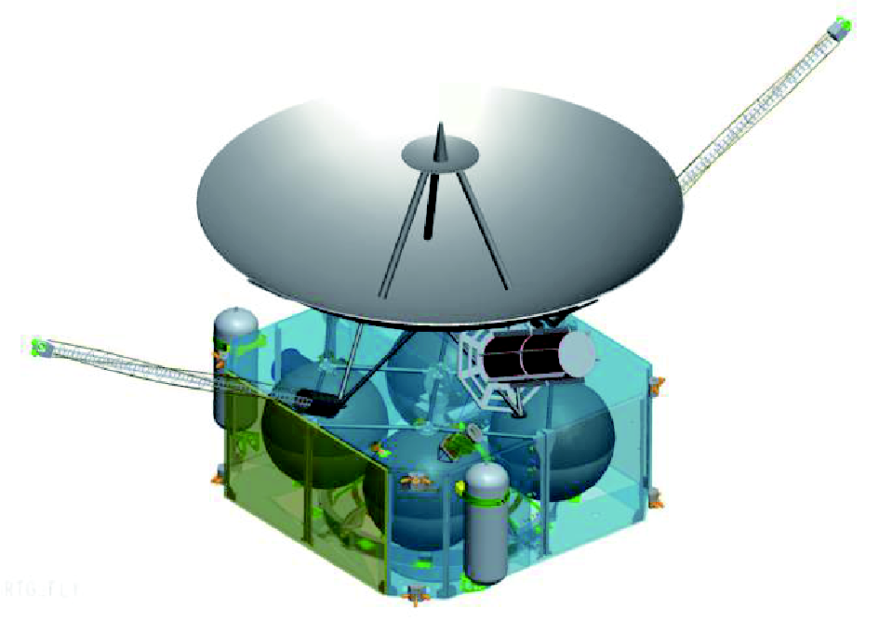The project aims to send separate spacecraft to the nose and tail of the heliosphere, a region of space dominated by solar wind created by our Sun, to study distinct areas of this bubble and how it interacts with the interstellar medium.
Wu Weiren, a senior figure in China’s lunar exploration project, told official industry newspaper China Space News Friday that scientists are working on an implementation plan for the mission.
Wu says the mission aims to reach 100 astronomical units—one AU is equivalent to one Sun-Earth distance, or 150 million kilometers—from Earth by 2049, when the People’s Republic of China celebrates the centenary of its founding.
No launch date was provided by Wu. However an overview of the proposed mission presented to the European Planetary Science Congress in 2019 indicates the Chinese heliosphere probes would launch in 2024. The first would make a flyby of Jupiter in 2029 before heading to the nose of the heliosphere.
The second probe would make a flyby of Jupiter in 2033 before a flyby of ice giant Neptune in 2038. The spacecraft could also potentially release a small impactor probe shortly before arrival, with the main probe observing the interaction with the Neptunian atmosphere.
The project somewhat echoes NASA’s Voyager missions but the probes’ intermediate targets are constrained by current relative positions of the planets. The Voyagers made use of a rare planetary alignment to visit all four outer planets. Voyager 1 and 2 are now 22.7 and 18.9 billion kilometers (152 and 126 AU) away from Earth respectively.
For the Chinese probes more science focus is therefore on the heliosphere and interstellar medium, including studying phenomena such as Anomalous Cosmic Rays and the “hydrogen wall,” at the boundary of the solar system and interstellar space.
The Chinese heliosphere probes will take advantage of advances in propulsion and ground station and deep space communications made in recent years by China’s space industry. Such progress has recently facilitated missions to Mars, a lunar sample return and a planned mission to Jupiter.
China’s “Interstellar Express”
The mission profile above was understood to still be under development. A workshop hosted by the International Space Science Institute in Beijing in late 2019 explored the mission trade space and presented possibilities including a flyby of Kuiper Belt Object Quaoar and its small moon Weywot. The workshop also used the name “Interstellar Express” for the proposed Chinese mission.
A 2019 paper on “Exploring the solar system boundary” published in Scientia Sinica by Wu and other high profile Chinese scientists in space exploration provides insight into probable launch and spacecraft design.
The spacecraft will be powered by radioisotope thermoelectric generators (RTGs) with a science payload mass of greater than 50 kilograms. Long March 3B and larger Long March 5 rockets are under consideration for launch, depending on which propulsion systems—dual-mode chemical propulsion systems or monopropellant and ion-electric propulsion—are selected.

A further mission proposal noted in the paper would head away from the Sun perpendicular to the plane of the ecliptic. That mission would launch in 2030 and be powered by a nuclear thermal reactor.
Achieving speeds of around 6 AU per year, the spacecraft could also target extreme Kuiper Belt Objects on its highly inclined trajectory. The technology maturity level for the mission is noted as low, thus requiring breakthroughs and verification.
The two 2024 Chinese missions would become the sixth and seventh spacecraft to achieve solar system escape velocity, following NASA’s Pioneer 10 and 11, Voyagers 1 and 2, and New Horizons.
Pioneer 10 is the only spacecraft to head towards the tail of the heliosphere. Communication with the spacecraft was lost in 2003 at a distance of 12 billion kilometers (80 AU) from Earth.
Scientists at the Johns Hopkins University Applied Physics Lab are meanwhile studying the Interstellar Probe mission that could launch before 2030.
China recently approved a 14th Five-year plan for the period 2021-2026. Wu noted that missions for a fourth phase of Chinese lunar exploration, including a basic international lunar research station, would be carried out or developed during the period.
Wu added that the 2010 Chang’e-2 lunar orbiter, which later conducted a flyby of asteroid Toutatis, is expected to return to the vicinity of the earth around 2027.



